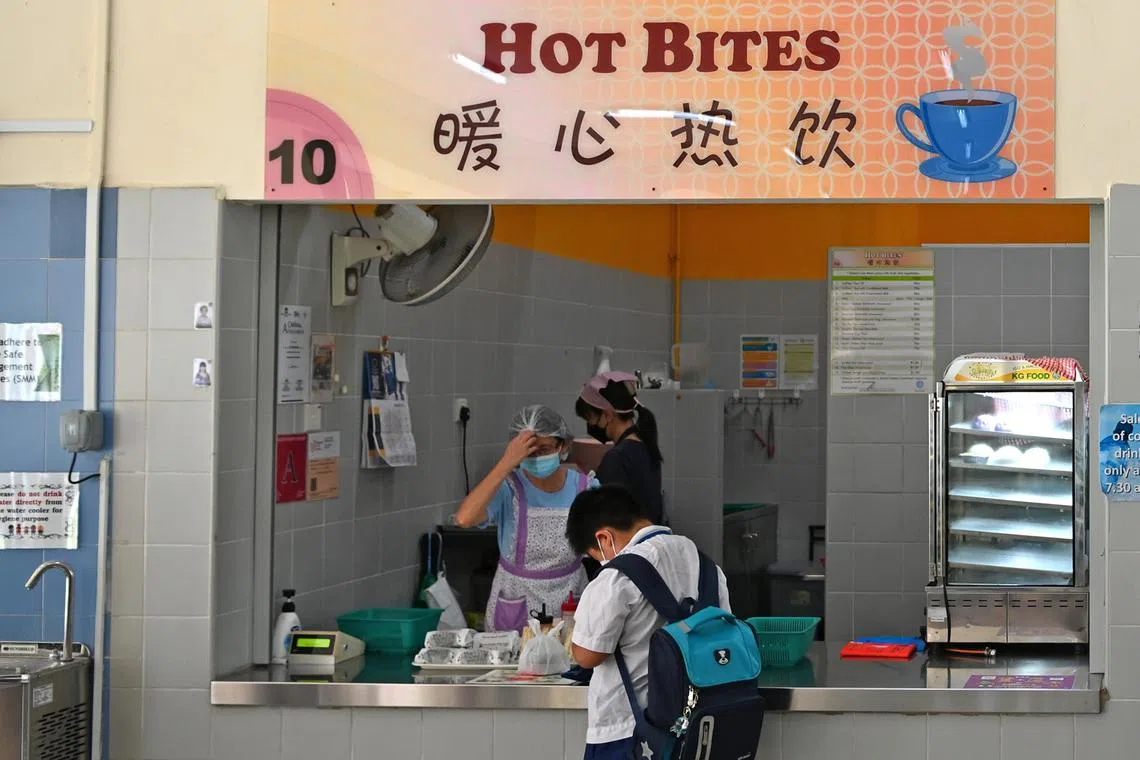Central kitchens for schools will improve quality control, waste reduction: Chan Chun Sing
Sign up now: Get ST's newsletters delivered to your inbox

Central kitchens are being explored as a solution for schools with difficulties hiring canteen stallholders.
ST PHOTO: KUA CHEE SIONG
Follow topic:
SINGAPORE - Getting schools to cater meals from central kitchens will make it easier to ensure the quality of food, said Education Minister Chan Chun Sing.
Central kitchens, which are being explored as a solution for schools with difficulties hiring canteen stallholders,
It is a misconception to assume that food prepared in central kitchens is less nutritious, said Mr Chan in an interview on new canteen models with radio station Kiss92 on Dec 2.
“It’s very hard to manage or to check the quality standards of thousands of canteen operators in our schools, but it’s easier for us to check the quality standards of the central kitchens,” he said.
Mr Chan was responding to a question about the nutrition of food from central kitchens. During the 30-minute interview, he was also asked about the sustainability of operating a canteen stall and how the transition to new canteen models will be managed.
In November, Mr Chan said the Education Ministry (MOE) had begun discussions with schools on new ways to run canteens.
There were 62 advertisements from primary and secondary schools listed on the MOE website for stallholders as at Dec 2.
One option would be for students to pre-order and pay for meals about a week in advance, Mr Chan said. Meals would be prepared at a central kitchen before being delivered to schools.
This is a potential solution to ensure affordable, healthy and quality food, he added.
In April, The Straits Times reported that, in a pilot initiative, some schools, including Yusof Ishak Secondary School, Blangah Rise Primary School and Spectra Secondary School, had started catering meals from central kitchens.
Mr Chan said central kitchens will also reduce costs that canteen operators have to bear because of food waste, as such kitchens operate on a larger scale, while demand is more uncertain for canteen operators.
“Canteen uncles and aunties, they don’t know when (students) wake up, whether they want nasi lemak or mee siam, and they have to prepare everything, and they end up with quite a bit of wastage and that gets into the cost,” he said.
MOE is also exploring options such as having traditional canteen stallholders but relying on vending machines for after-school hours, so students who stay back for co-curricular activities can get drinks and snacks.
Mr Chan added that, in future, schools will complement canteen stallholders with meals from a central kitchen. Schools can decide on the model based on their needs, he said.
“We’re happy to experiment with different models for our children and staff to have a nutritious meal at affordable prices,” he added.
On the difficulty of finding canteen stallholders, Mr Chan said the job is not easy.
Many students have told him they enjoy food from the canteen but do not aspire to be canteen operators, he added.
“It’s not just about cooking; it’s about managing the logistics, the finances, and everything else,” he said.
While rentals are low – ranging from $5 to $15 a month – canteen operators work for only about 40 weeks a year for half a day, and must cover the costs of ingredients themselves.
Students may also not have as much buying power compared with adults, Mr Chan said.
But canteen operators continue in their roles because they have formed a bond with students, said Mr Chan, adding that alumni may even return to visit stallholders.
“In some sense, they are there to give back because maybe they are in a different season in life and want a different pace in life,” Mr Chan said. “But generally one of the things that keep them going is because they want to interact with the students.”


